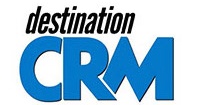| Read more on destinationcrm.com |
 |
| Download PDF Article |
What if you knew exactly what your customers wanted before you rolled out your marketing or sales campaigns? What if you could significantly increase engagement or leads by using intelligence gathered straight from the horse's mouth? That's what crowd-sourced predictive analytics is doing in the retail space, and it can make CRM an even more powerful tool.
Just about every company nowadays, whether the focus is on sales or donations, uses a CRM platform. But those that want more forward-looking data from their CRM solutions may be hitting a wall. On the other side of that wall are customers talking about the products they really want—and whether the ones your company is selling are on the money. The following are just a few ways crowd-sourced predictive analytics can help you scale that wall.
Customer RelationshipsCRM is a great repository for data, be it a sales team's customer interactions or a supply manager's logged product orders. It's also an invaluable tool to collaborate and keep projects or accounts moving despite team shifts. However, CRM's predictive capabilities are limited to historical data, and while you could make forward-looking decisions based on it, it's not wise to assume a market will look the same it did a year or even six months ago.
Retailers know this problem well, as they often sell products that are very similar to last year's assortments. Take, for example, the "little black dress," a mainstay in women's wardrobes since the 1920s. Every year, retailers need to sell another new little black dress, sometimes with subtle changes to its design. Convincing customers to buy another similar product requires knowledge of their style preferences, demographics, and the price points that will get them to commit. These three things all change over time, and CRM's historical data alone can't accurately gauge if this year's little black dress will sell.
The type of crowd-sourced data we're talking about has value not just on the store floor but also in managing inventory. For example, by applying predictive analytic models to forward-looking data, a retailer can identify the relative demand for each color of a certain type of garment. The company can use this data to set the appropriate buy quantities for each color, ensuring the proper amounts are available to avoid stock-outs or excess inventory. The same data can be used to stock each location with the right quantities of each color.
Once you have your combined CRM and predictive analytics insights, you can really start to better hone not just inventory decisions, but marketing and sales decisions as well. Email campaigns can be tailored to offer more relevant content about offers and promotions, which will lead to increased leads and foot traffic in brick-and-mortar stores.
But the experience needs to continue once customers walk in, with inventory that is relevant and interesting and that ultimately leads to a purchase. Feedback gleaned from predictive analytics can be used for in-store signage, highlighting items that will appeal to the target consumer. In-store technology, such as touch-screen walls like those found in Rebecca Minkoff's new Manhattan store, can be used to provide customers with recommendations based on predictive analytic data and their own personal preferences. This can save customers time in the fitting room and increase the odds they'll walk out with a product instead of leaving it on the store shelves.
We're starting to see an emergence of even more targeted approaches using data from social and mobile. Tablets are now being leveraged as point-of-sale tools for marketing capabilities, including social log-ins that provide customer demographic data and gamified quizzes that can provide direct feedback on products and services customers would like to see.
Don't Forget Internal Team Analytics
With all this talk of using predictive analytics from consumers, it's important to note that your own sales teams, both in the office and on the retail floor, can provide valuable intel from being in the trenches every day. We call this "democratization of choice"—making sure that your sales teams have a say in the product development decisions you'll be making in the next six to 12 months.
The CRM platform your company uses is only as valuable as the contributions from its users, but adding real-time customer data will help ensure it thrives for your business needs. That great repository of historical data can be strengthened with predictive analytics and turned into a "crystal ball" for your sales, marketing, and product teams, leading to more targeted campaigns, more efficient supply chain management, and higher conversions at the register.
Greg Petro is the president and CEO of First Insight.















